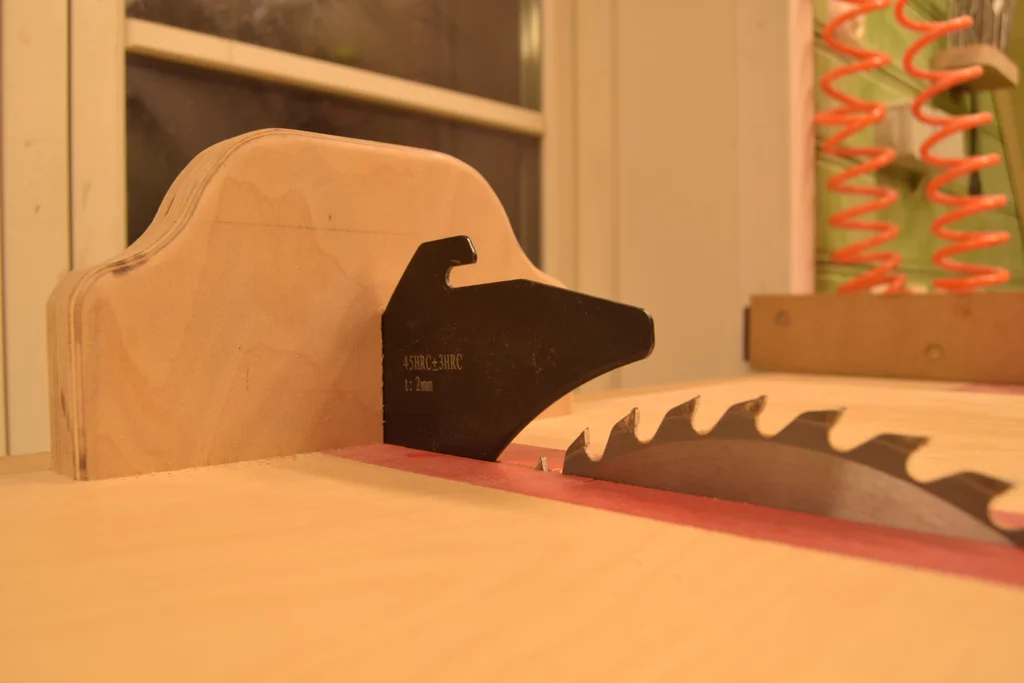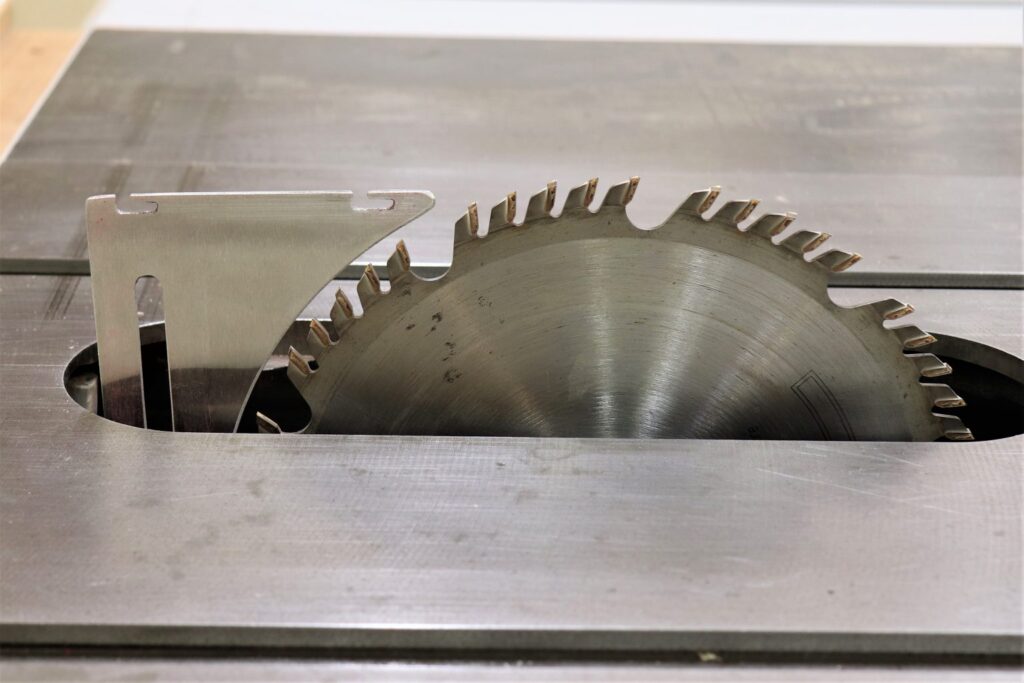Last updated on January 20th, 2024 at 02:52 am
Woodworking safety is paramount. A riving knife protects woodworkers. This page will explain riving knives, their relevance, and how they vary from other safety devices. By the end, you’ll understand why woodworkers need riving knives.
What Is a Riving Knife?
Table saws have safety riving knives. This metal or plastic component behind the saw blade is vital. Its major goal is to prevent kickback, a dangerous situation in which the workpiece forces the operator backwards.
How Does a Riving Knife Work?
A riving knife maintains the saw blade’s position during the cutting process. It aligns with the blade vertically. The riving knife prevents backlash by separating the workpiece from the blade.
Importance of Using a Riving Knife

A riving knife is essential when using a table saw or other woodworking tools. A riving knife behind the saw blade prevents kickback, which can be deadly.
Ripping knives are essential for these reasons:
Kickback prevention: Kickback occurs when the workpiece is violently propelled at the operator owing to incorrect feeding or material binding. The riving knife prevents backlash by keeping the blade’s kerf open.
It prevents material on either side of the blade from squeezing together and throwing the workpiece back.
Blade alignment: A riving knife aligns the blade during cutting. It keeps the blade aligned with the riving knife, preventing it from catching or binding.
Splitting and binding prevention: Wood can close in on the blade’s rear while cutting heavy or dense materials, causing binding or pinching.
This can trap material or bind the blade, producing backlash or danger. The riving knife keeps the cut open and prevents the wood from closing on the blade.
Improved cutting quality: A riving knife prevents binding and kickback for cleaner, more accurate cuts. It decreases blade deflection and material moving, making cuts smoother and more precise.
Enhanced safety: Riving knives improve safety. It prevents operator-blade contact. It adds protection when used with push sticks, proper technique, and PPE.
How Is a Riving Knife Different from a Splitter or a Blade Guard?

Woodworking safety gear including riving knives, splitters, and blade guards range in design and function. Differentiating these devices:
Riving Knife: A metal plate or blade mounted directly behind the saw blade rises and falls with it. It cuts parallel to the blade’s teeth. Keeping the kerf open and avoiding material from squeezing the blade back prevents backlash. It enhances cutting and blade alignment.
Splitter: A vertical protrusion or metal plate behind the saw blade is a splitter. Splitters do not adjust blade height like riving knives. Keeping the kerf open prevents kickback like a riving knife. Splitters cannot vary blade heights or tilt angles, hence they are less versatile and safe than riving knives.
Blade Guard: A translucent cover that covers the saw blade. It protects the operator from blade contact while revealing the cutting area.
Blade guards often have anti-kickback pawls or teeth that dig into the wood. A blade guard prevents blade contact and reduces visibility, although it may hinder certain cuts and operations.
Common Questions
What are riving knife’s main benefits?
A riving knife improves cutting precision, safety, and tearout and binding.
Riving knives adjustable?
Many riving knives are height- and position-adjustable. This aligns the knife and blade for safety and performance.
Can a portable or contractor table saw use a riving knife?
Portable and contractor table saws can be adapted with aftermarket riving knives. Consult the manufacturer’s instructions and choose a riving knife that fits your model.
Non-through and dado cuts—do I need to remove the riving knife?
Cut type determines it. To avoid interference, remove the riving knife from non-through cuts. For safety, leave the riving knife inserted for thorough cuts and most woodworking activities.
Zero-clearance inserts for riving knives?
Zero-clearance inserts are not riving knives. A zero-clearance insert supports the workpiece and reduces tearout, yet a riving knife prevents backlash. Both safety elements work best together.
When should I check and maintain my riving knife?
Check your riving knife routinely for damage, wear, and misalignment. If the riving knife has bent or dull blades, replace it immediately. Maintaining and cleaning the riving knife will maximize its performance and lifespan.
Conclusion
Finally, riving knives are essential safety tools for woodworkers. Its main functions are to reduce kickback, tearout, binding, and cutting precision. Riving knives, like splitters and blade guards, promote safe and pleasant woodworking.
Use woodworking machinery safely. By understanding and utilizing a riving knife properly, you may create attractive and precise woodworking projects while reducing mishaps.
